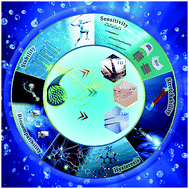Recent progress in flexible nanocellulosic structures for wearable piezoresistive strain sensors
Abstract
With the coming of the “green” and “wearable” era, the superior flexibility and high biocompatibility accompanied by superb sensing abilities of nanocellulosic materials have significantly promoted the application of piezoresistive strain sensors in the area of intelligent wearable and skin-attachable devices (such as human motion detectors, human–machine interfaces, and electronic skins). In this review, a detailed overview on the design and preparation strategies of nanocellulosic piezoresistive strain sensors is presented. The roles of nanocellulose in the core design parameters including sensitivity (gauge factor), dynamic durability, stretchability, hysteresis, and biocompatibility are summarized based on three primary points, namely the structure–response relationship, supramolecular interaction, and synergistic mechanism. Furthermore, a comprehensive overview of the fundamental aspects related to the origin, physicochemical properties, and disassembly–reassembly approaches of nanocellulose is provided, and an analysis on the morphology and mechanical properties of 1D-to-3D nanocellulose assemblies is also illustrated. Finally, this review presents a brief summary, challenges, and perspectives of nanocellulosic strain sensors.



 Please wait while we load your content...
Please wait while we load your content...